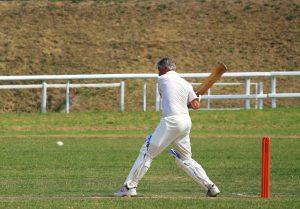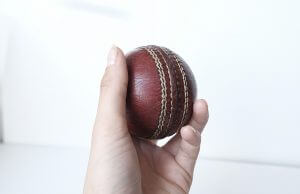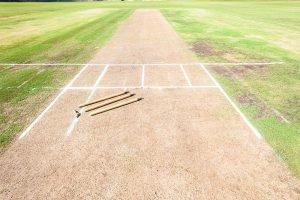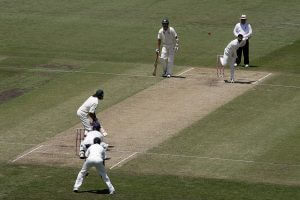How to Hold a Cricket Bat
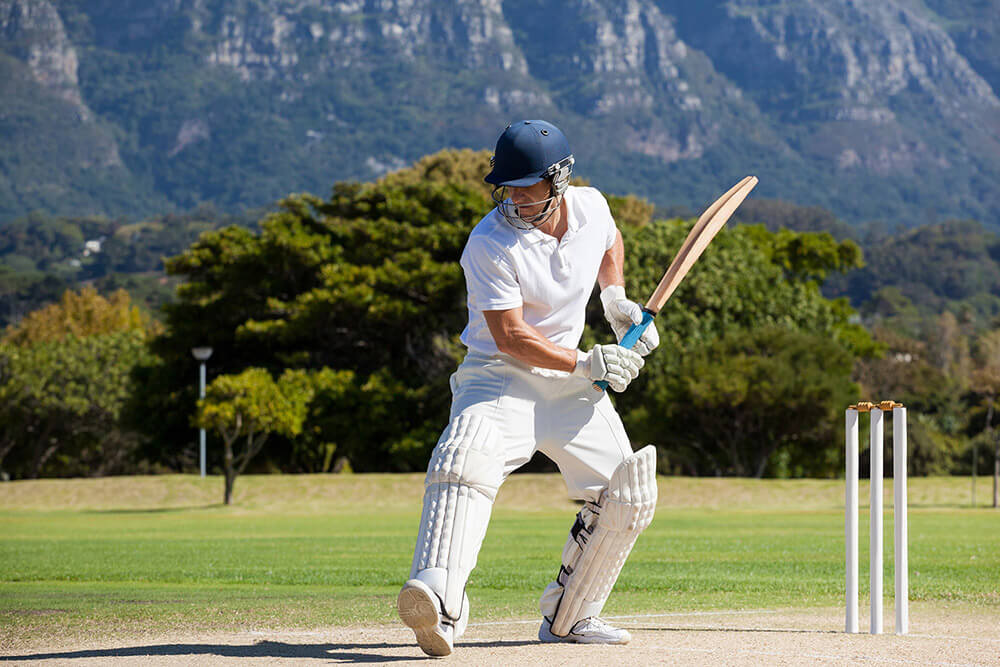
The importance of the technique you use when holding the cricket bat can be underrated while in fact, it forms the basis for good batting. Even the slightest changes to the grip can impact many aspects, including your ability to play shots on the leg and off side. Moreover, you might end up playing airy shots rather than playing along the carpet. This article will be of great help with its detailed descriptions of the main gripping techniques, their benefits and drawbacks. The tips you find here can be used in practice for improving your grip and, therefore, the game in general.
The most common batting grip is a traditional V-grip. This method is named so because when holding the bat, the gaps between your index fingers and thumbs form a ‘V’ shape. Other popular techniques are the Bradman, open face and closed face grips. Taking a closer look at each of the methods will be helpful in evaluating their advantages and disadvantages and picking the right one.
Contents
Traditional V-Grip
In general, most of the experienced batsmen prefer this grip which is also ideal for those who are just getting introduced to the game. It offers a neutral position and is perfect for playing shots on all sides. Young players shouldn’t experiment too much and should try using a simple V-grip to develop a solid and reliable technique. Undoubtedly, there are certain instructions one needs to follow to master the V-grip.
Contents
Hold the bat with both hands and make sure the thumbs are in the correct position, forming a V-shaped figure. For right-handers, the right hand is on top while for left-handers, the left one. Furthermore, Vs created by both hands should be in line with each other, as if they were connected by an invisible thread.
Hold the middle of the bat handle with both hands and pick it up. Ensure your hands are properly positioned and avoid gripping the bat too tight. Keep your bottom hand a bit loose, so you can play shots on all sides of the wicket. When you use the V-grip, the bat’s face should point down towards the ground and its toe should point towards the wicket-keeper and slips.
Benefits: Allows you to play shots on all sides of the wicket.
Drawbacks: None.
ClosedClosed Face Batting Grip
atters like playing shots on the leg side rather than the off side. The reason for it is because they use a closed face grip and angle the bat’s face slightly towards the leg. A great example of a cricketer applying this technique is former South African batsman Graeme Smith. The bat face was closed a bit and pointed towards the leg side. As a result, he scored most of his runs on the leg side. The question occurs, how is the closed face grip different from the V-grip?
The major difference is that you pay more attention to the bottom hand in the closed face batting grip. Thus, the bottom hand has a stronger grip on the bat and enables you to play more powerful shots. This way, you’ll tend to favour the leg side and will find it more difficult to hit the ball into the off side. The close face batting grip is usually chosen by players based on their own strengths and preferences.
In practice, some coaches may try to persuade you to hold the bat differently but you shouldn’t follow such advice if you feel comfortable with the closed face grip and feel that this technique fits you the most.
Benefits: You can play stronger shots on the leg side.
Drawbacks: You may find it difficult to play on the off side and would need to play balls outside or on the off stump with caution.
Open Face BaOpen Face Batting Grip
is used by those batsmen who like improvising and are in need of scoring “creative” runs. For example, if a bowler is bowling a lot of effective yorkers and limiting your scoring, you can try this grip to hit the yorkers on the off side. English batsman Jos Buttler uses this grip smartly get the middle of his bat on to yorkers which would not be possible when playing with a vertical bat. Keep the bat horizontal and open its face to strike yorkers and full-length balls to the off side.
To apply the open face batting grip, simply rotate the bat a bit during the bowler’s run-up to the wicket. A small rotation is enough so that the bat’s face is exposed to the off side. However, this grip should not be used regularly as it will influence your ability to play leg-side shots. On the other hand, the open face grip is ideal if you need to speed up with scoring runs. No doubt, it is important to learn to tackle yorkers effectively and this grip can help you do exactly that.
Advantages: Enables you to hit full deliveries to the off side.
Drawbacks: You cannot use this grip all the time as it can impact your ability to play leg-side deliveries.
Don Bradman’s BattinDon Bradman’s Batting Grip
ar the best batting record and average among batters of all time. However, the video footage was a rare thing back in the days and most of the modern players are unaware of his batting technique and skills. His batting grip was considered a bit unorthodox but it was the grip that contributed a lot to Don Bradman’s success. For those who wish to try his technique, there are several tips to follow.
Hold the bat with the traditional V-grip, explained earlier. Then rotate the bottom hand to make it go below the bat. After that, slightly rotate the top hand to place it behind the bat’s handle. Most coaches will inform you that during a shot’s pick-up stage (when preparing to play a shot), you must point your bat towards the wicket-keeper. However, Bradman’s approach was a bit different. His grip made him point the bat towards the slips during the pick-up stage.
Thus, in order to play a straight shot, you need to rotate the bat before hitting the ball. For this reason, Bradman’s method is often called the “rotary technique”. A big advantage of this grip is that you automatically roll the wrists to keep the ball down when playing cross-batted shots such as the square cut or the hook. This happens because your bottom hand shifts its position as you play shots. Bradman’s grip can, therefore, help you play safely along the ground and avoid giving catching chances to the fielders.
With his grip, Bradman was also able to easily play shots on the leg side as the way the hands were placed on the handle made the bat face close towards the leg. At the same time, it limited his ability to play shots through the point and mid-off regions but also reduced the odds of hitting the ball behind the wicket.
Needless to say, you need to fully commit yourself to this grip to make it work for you, practicing a lot to master it. Moreover, quite some time is needed in order to get comfortable with this technique and to use it effectively against various kinds of bowlers. Be prepared to devote hours to practicing in the nets to polish this skill to perfection. If you feel comfortable with Bradman’s grip, try to use it regularly and pay attention to whether it has any positive influence on your batting or not.
Benefits: You can easier play shots on the leg side and keep the ball down while playing square of the wicket on both sides.
Disadvantages: Some players find this grip is unnatural. Moreover, playing shots through the off side can be rather difficult when using this technique.
Ideal Height of the Grip
The heigh
Ideal Height of the Grip
e depends on your personal preferences and playing style. Australia’s aggressive batsman Adam Gilchrist liked to put his hands more towards the handle top. It helped him hit the ball far and hard which resulted in his brilliant success. Gilchrist stated, however, that he liked the high grip because it felt more natural to him. On the other hand, Ricky Ponting preferred a lower grip on the bat handle as it allowed him to have better control over the bat and the shots he made.It is highly recommended for beginners to place their hands closer to the middle of the bat handle, leaving a tiny gap between the hands. If needed, this neutral position can be changed in the future and you will be able to slightly shift your hands up or down according to your preferences. A central hand position in a grip is thus the basis for a good batting technique.
Conclusion
There is no shadow of a d
Conclusion
to properly hold the bat is the first lesson in batting. We advise you to start with the traditional V-grip and modify it as you move forward and improve your batting skills. Having mastered the technique, you would be able to change the grip to meet the demands of an innings and to counter the tactics of bowlers.For instance, if a bowler delivers a lot of accurate yorkers, you can beat his strategy by using the open face grip to force the ball on the off side. This batting grip is thus ideal for the death overs in limited-overs games when you need to score fast. To sum up, make sure you choose the grip type that feels most natural to you and helps you reach the full potential of your strengths and batting skills.

